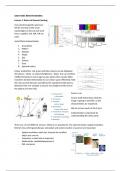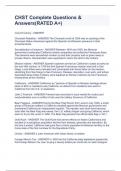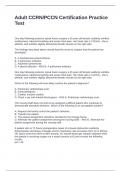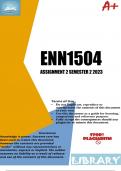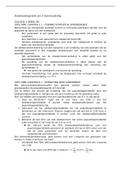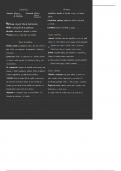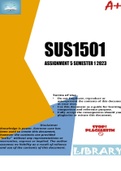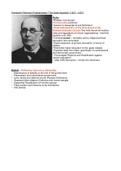2020
298
by: Alexandra Shtein
1
,Table of Contents
CHAPTER 1: INTRODUCTION TO TAX ........................................................................................................... 1
CHAPTER 2: .................................................................................................................................................. 1
o TAX TABLE TO CALCULATE TAXABLE INCOME: ............................................................................................... 1
CHAPTER 3: GROSS INCOME ........................................................................................................................ 3
CASES: .................................................................................................................................................................... 6
CHAPTER 21: SA SOURCE INCOME ............................................................................................................. 10
CHAPTER 4: SPECIAL INCLUSIONS .............................................................................................................. 12
o ANNUITIES ................................................................................................................................................... 13
o ALIMONY PAYMENTS .................................................................................................................................. 14
o SERVICES...................................................................................................................................................... 14
o RESTRAINT OF TRADE .................................................................................................................................. 17
o SERVICES: COMPENSATION FOR TERMINATION OR VARIATION OF EMPLOYMENT .................................... 18
o SERVICES: COMMUTATION OF AMOUNTS DUE ........................................................................................... 21
o LEASE PREMIUMS ........................................................................................................................................ 21
o COMPENSATION FOR IMPARTING KNOWLEDGE AND INFORMATION......................................................... 23
o LEASEHOLD IMPROVEMENTS ...................................................................................................................... 23
o FRINGE BENEFITS ......................................................................................................................................... 25
o PROCEEDS WITH THE SALE OF CERTAIN ASSETS .......................................................................................... 25
o DIVIDENDS................................................................................................................................................... 25
o KEY-MAN INSURANCE POLICY PROCEEDS .................................................................................................... 25
o AMOUNTS REQUIRED TO BE INCLUDED IN TAXPAYER’S INCOME ................................................................ 26
CHAPTER 8: EMPLOYMENT BENEFITS ........................................................................................................ 33
o EMPLOYMENT BENEFITS.............................................................................................................................. 33
o ALLOWANCES , ADVANCES & REIMBURSEMENTS ....................................................................................... 35
o TRAVEL ALLOWANCES ............................................................................................................................................ 38
o SUBSISTENCE ALLOWANCES ................................................................................................................................... 48
o EMPLOYEES TAX & SUBSITENCE ALLOWANCES: ..................................................................................................... 50
o OTHER ADVANCES / ALLOWANCES / REIMBURSEMENTS: ...................................................................................... 50
o 7th SCHEDULE BENEFITS ..................................................................................................................... 57
o Assets acquired for no consideration / assets acquired for less than actual value.................................................. 60
o Use of sundry assets:.............................................................................................................................................. 63
o Right of use of motor vehicles: ............................................................................................................................... 65
o Meals, refreshments, meal & refreshment vouchers.............................................................................................. 74
o Residential accommodation ................................................................................................................................... 76
o Free / cheap services.............................................................................................................................................. 81
o Low interest debts.................................................................................................................................................. 83
o Low-interest rate loan v Subsidies.......................................................................................................................... 85
o Subsidies in respect of debts: ................................................................................................................................. 86
o Discharge / payment of obligation: ........................................................................................................................ 86
o Contributions to benefit funds ............................................................................................................................... 87
o Costs relating to medical services........................................................................................................................... 89
contributions to one of the employee’s insurance policies = included in gross income ...................................................... 90
o Pension and provident funds.................................................................................................................................. 90
,CHAPTER 5: EXEMPT INCOME .................................................................................................................... 96
TAX TABLES:............................................................................................................................................. 117
3
,CHAPTER 1: INTRODUCTION TO TAX
regressive tax – disproportionally affects lower income earners
proportional tax – at a fixed rate
o 2020 YoA for natural persons : 1 March 2019 – 29 February 2020
for companies: 1 January 2020 – 31 December 2020 or 1 July 2019 – 30 June 2020
dividend tax = 20%
CHAPTER 2:
Broken YoA:
proportionate rebate =
1) TP dies
2) TP born
3) TP declared insolvent
* look at age person would have lived to if lived to
the end of the tax year then apportion the rebate
o average tax rate =
o effective tax rate =
o threshold =
18%
o TAX TABLE TO CALCULATE TAXABLE INCOME: GRIID ACDD TRN
Gross Income
+ receipts
(exempt income)
INCOME
(allowable deductions)
(assessed loss)
+ taxable capital gain
(deduction on retirement fund)
(deduction on donation
TAXABLE INCOME
(rebates / tax credits)
NORMAL TAX PAYABLE
1
,o EQUITY
– fairness according to the ability to pay principle / benefit principle
ability to pay principle – requires taxpayer to be taxed according to their economic capacity
(higher income earner pays more)
benefit principle – taxpayer should pay tax in proportion to benefits they receive
VERTICAL EQUITY – TP with greater economic capacity bears greater tax burden
whoever earns more pays more tax
HORIZONTAL EQUITY – * look at same income group if paying same amount of tax
TP with equal economic capacity bear equal burden
pay equal amounts of tax
2
,CHAPTER 3: GROSS INCOME
Residency:
a natural person will be a resident for income tax purposes if such a person is ordinarily resident in South
Africa / meets the criteria of the physical presence test
Ordinarily resident
- where someone has the intention to return (CIR vs COHEN)
- country where one normally resides apart from occasional absences, one’s “true home” (where creating a home)
(CIR vs KUTTEL)
- resident of South Africa - (CIR vs COHEN)
- non-resident of South Africa - (CIR vs KUTTEL)
- look at a person’s “true home”
- eg: has no family or property in South Africa (CIR vs KUTTEL) & only visits South Africa for work / holiday purposes &
will ultimately return to USA = not ordinarily resident in South Africa not a resident for SARS tax purposes
resident: taxed on worldwide income
non-resident: taxed on SA source income
Physical Presence test:
a natural person who is not at any time in the relevant year of assessment “ordinarily resident” will be a
resident is physically present in the Republic according to the physical presence test
o requirements:
physically present in South Africa for period:
- exceeding 91 days in the current YoA
- exceeding 91 days in each preceding 5 YoAs (2015-2019)
- exceeding 915 days in the preceding 5 YoAs
eg: meet the requirements of the physical presence test in the 2021 YoA
- will be deemed to be a resident for SA Income Tax purposes from the first day of the 2021 YoA (1 Mar 2020)
o cease to be physically present = outside of South Africa for a period of 330 continuous full days from day after departure
- taxed as resident: 1 March 2020 day before departure
- taxed as non-resident: day after departure 28 February 2021
note: the 330 days will always extend over 2 years of assessment, on 28 February 2021 the TP would not have been able to
provide evidence of compliance with the 330 day rule and would have been taxed as a resident for entire YoA
3
, * Residency of companies / trusts / CC:
- incorporated / formed in SA
- place of effective management in SA (where key management & commercial decisions are made over the long-run)
example:
Taxpayer flew from SA to UK on 1 June 2019 & remained physically outside SA up to & including 15 May 2020
29 Feb 2020 15 May 2020
1 March 2019 31 May 1 Jun 2 Jun ‘19
emigration: counting days:
YoA ends on day immediately from 2 June (1 June = transit day)
before TP ceases to be a resident
next YoA deemed to commence RULES:
on day ceases to be a resident part of a day = whole day
transit day = excluded
the taxpayer is out of the country for more than 330 continous days therefore with
Respect to S9H 2(b) for YoA:
resident: 1 March – 31 May 2019
non-resident: 1 June 2019 – 29 February 2020
o TAX TABLE TO CALCULATE GROSS INCOME:
GLITAA TPR NWNW TT
Gross Income
(less: exempt income) dividends / interest
INCOME
+ taxable capital gain
(allowable deductions)
(assessed loss)
TAXABLE INCOME
normal tax as per progressive tax table
(rebates section 6(2)(a) )
NORMAL TAX PAYABLE
(withholding tax on immovable property)
NORMAL TAX DUE ON ASSESSMENT
+ WHT on interest
Total withholding taxes
TOTAL TAX PAYABLE
4


